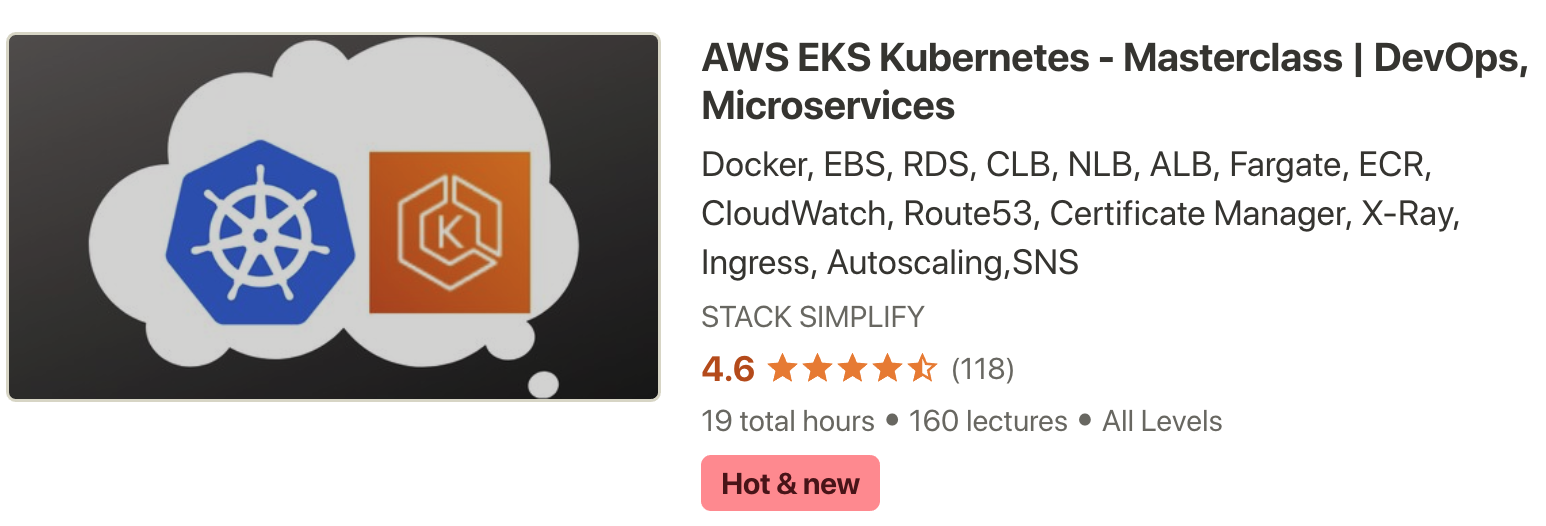Kubernetes - ReplicaSets
Step-01: Introduction to ReplicaSets
- What are ReplicaSets?
- What is the advantage of using ReplicaSets?
Step-02: Create ReplicaSet
Create ReplicaSet
- Create ReplicaSet
kubectl create -f replicaset-demo.yml
- replicaset-demo.yml
apiVersion: apps/v1
kind: ReplicaSet
metadata:
name: my-helloworld-rs
labels:
app: my-helloworld
spec:
replicas: 3
selector:
matchLabels:
app: my-helloworld
template:
metadata:
labels:
app: my-helloworld
spec:
containers:
- name: my-helloworld-app
image: stacksimplify/kube-helloworld:1.0.0
List ReplicaSets
- Get list of ReplicaSets
kubectl get replicaset
kubectl get rs
Describe ReplicaSet
- Describe the newly created ReplicaSet
kubectl describe rs/<replicaset-name>
kubectl describe rs/my-helloworld-rs
[or]
kubectl describe rs my-helloworld-rs
List of Pods
- Get list of Pods
#Get list of Pods
kubectl get pods
kubectl describe pod <pod-name>
# Get list of Pods with Pod IP and Node in which it is running
kubectl get pods -o wide
Verify the Owner of the Pod
- Verify the owner reference of the pod.
- Verify under "name" tag under "ownerReferences". We will find the replicaset name to which this pod belongs to.
kubectl get pods <pod-name> -o yaml
kubectl get pods my-helloworld-rs-c8rrj -o yaml
AWS EKS - Elastic Kubernetes Service - Masterclass

Step-03: Expose ReplicaSet as a Service
- Expose ReplicaSet with a service (NodePort Service) to access the application externally (from internet)
# Expose ReplicaSet as a Service
kubectl expose rs <ReplicaSet-Name> --type=NodePort --port=80 --target-port=8080 --name=<Service-Name-To-Be-Created>
kubectl expose rs my-helloworld-rs --type=NodePort --port=80 --target-port=8080 --name=my-helloworld-rs-service
# Get Service Info
kubectl get service
kubectl get svc
# Get Public IP of Worker Nodes
kubectl get nodes -o wide
- Access the Application using Public IP
http://<node1-public-ip>:<Node-Port>/hello
Step-04: Test Replicaset Reliability or High Availability
- Test how the high availability or reliability concept is achieved automatically in Kubernetes
- Whenever a POD is accidentally terminated due to some application issue, ReplicaSet should auto-create that Pod to maintain desired number of Replicas configured to achive High Availability.
# To get Pod Name
kubectl get pods
# Delete the Pod
kubectl delete pod <Pod-Name>
# Verify the new pod got created automatically
kubectl get pods (Verify Age and name of new pod)
Step-05: Test ReplicaSet Scalability feature
- Test how scalability is going to seamless & quick
- Update the replicas field in replicaset-demo.yml from 3 to 6.
# Before change
spec:
replicas: 3
# After change
spec:
replicas: 6
- Update the ReplicaSet
# Apply latest changes to ReplicaSet
kubectl replace -f replicaset-demo.yml
# Verify if new pods got created
kubectl get pods -o wide
Step-06: Delete ReplicaSet & Service
Delete ReplicaSet
# Delete ReplicaSet
kubectl delete rs <ReplicaSet-Name>
# Sample Commands
kubectl delete rs/my-helloworld-rs
[or]
kubectl delete rs my-helloworld-rs
# Verify if ReplicaSet got deleted
kubectl get rs
Delete Service created for ReplicaSet
# Delete Service
kubectl delete svc <service-name>
# Sample Commands
kubectl delete svc my-helloworld-rs-service
[or]
kubectl delete svc/my-helloworld-rs-service
# Verify if Service got deleted
kubectl get svc
Pending Concept in ReplicaSet
- We didn't discuss about Labels & Selectors
- This concept we can understand in detail when we are learning to write Kubernetes YAML manifest.
- So we will understand about this during the ReplicaSets-YAML section.
